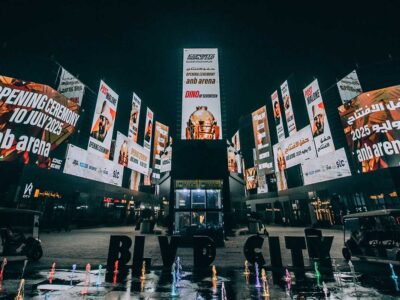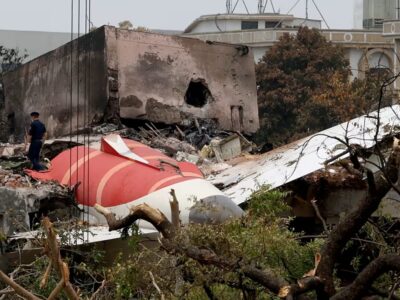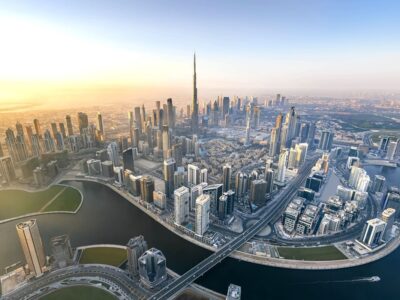Alfred Harmsworth, 1st Viscount Northcliffe, acknowledged by Lord Beaverbrook as “the greatest figure who ever strode down Fleet Street” famously observed that, “News is what somebody somewhere wants to suppress; all the rest is advertising.”
The problem was, though, how do we distinguish between what is advertising (or propaganda) and what is news? And does it even matter? Those questions remain relevant. The difference is that in the past, few asked that question and the number of news sources was very few compared with what is available on the internet today.
Our diversity of “news” sources now ranges from the opinions of a keyboard warrior closeted in a dark bedroom in rural Arkansas to the most eminent and publicly lauded investigative journalist – and the democracy of the internet has allowed the opinions of both to be expressed equally.
As a boy, I developed an addiction to news. It was an innocent addiction in far less complicated times. I used to devour news and would wait patiently to have a glimpse of the paper before my grandfather delved into it with his morning tea.
News and media became embedded in my DNA from the age of seven. That early addiction was reinforced by the newspapers, radio and later television that became a part of our household. When I was asked to head Arab News in Jeddah in 1982 although I had never worked for a publication, I took up the challenge. For ten years it was print, print and print.
Changing channels
Reflecting on the media from a variety of perspectives, I am amazed at the speed of change in the last few years. The Iraqi invasion of Kuwait and subsequent rise of CNN and later MBC added a new dimension to news gathering and viewing. For the first time the public saw wars and brutality live on air. This did not greatly affect the print media, though, as it was still considered a part of the larger communication medium; each complemented the other.

The rise of digital technology, however, saw momentous changes. There was a new lexicon. Facebook, Twitter, Instagram and a host of other platforms became part of our lives. Citizen journalism was born and censors were no longer capable of handling it. “If you can’t print, tweet!” became the motto. Many Arab writers would tweet and publish their stories on Facebook with a note saying that the editor had spiked the piece. Notoriety or censorship is a powerful advertisement; consequently, they got more readers.
As a result, the media has changed irreversibly because of the democratisation of information, whether the information was true or not. Anybody can put words and pictures on the Internet. The problem is, it has become increasingly difficult to find out what the truth is.
Credible sources
The 10th Arab Youth Survey shows that young Arabs trust CNN most as a news source and Al Jazeera least. It also shows that there had been a substantial shift towards social media as a source for news. Moreover, young Arabs interviewed say they get more of their news from social media than television. This was a substantial shift from the 2015 position.
Augmenting this shift, 49 percent of young Arabs say they get daily news from Facebook. Given the recent exposures concerning Facebook and Cambridge Analytica – news of which broke after the fieldwork for the Survey was completed – one has to question the veracity of any news sourced from that platform and ask what is Facebook’s real purpose? The dissemination of news it is not. Perhaps social control?
Tweeting has become if not “the sport of kings” then certainly that of heads of state. They have used Twitter to expound their views and at times present the news firsthand, bypassing their own official media channels. Trump of the US, Erdogan of Turkey and many Arab rulers, too, use Twitter for speedy dissemination of their views. The downside to all of this is the total lack of reliability and accountability.

Traditional news sources are bound by codes of practice – admittedly sometimes broken. However, you cannot fire a Twitter “journalist” for inaccuracy. This opening of access to Internet-wide exposure gave rise to the new media bogeyman, Fake News. If a statement, a Photoshopped image or an outrageous tweet could cause a sensation, then many young people jumped on board. They got followers but the damage they were doing was virtually irreparable.
Accountability in the Twitter age
In a few short years, we went from newspaper journalism, subject to fact-checking and heavy editing, to blogs stuffed with opinions, to tweeting, where you can say anything and it gets serially repeated.
And so, Arab Twitter users, young and old, spread division, hatred and malice among Arab people, even if they did not explicitly mean to do so. Many of the young thrived on spreading fake news. Instagram began to be used extensively and, with the removal of several taboos, young women and men created a reality show of themselves. Their followers increased by the thousands.
This ego trip had some positive aspects: it helped spread Arab fashion, food, adventure and sports. But a new breed of “media influencers” in the Gulf began to acquire a revenue stream that made them financially independent; this hurt mainstream media and I have observed this shift in both circulation, subscription and advertising.
The digital bubble has now burst and its overflow has affected us all. However, the majority of young people in the Arab world are mature and would like to use these new tools to improve society. They also strive to use them as a vehicle for the promotion of goodwill and progress.
The young, as always, want their voices heard. Never before have they had such a platform on which to express themselves. Young people, through these new forms of media, have exhibited more maturity than many of those before them who led traditional media.




 Khalid Al Maeena, managing partner of Quartz Communication Company
Khalid Al Maeena, managing partner of Quartz Communication Company



